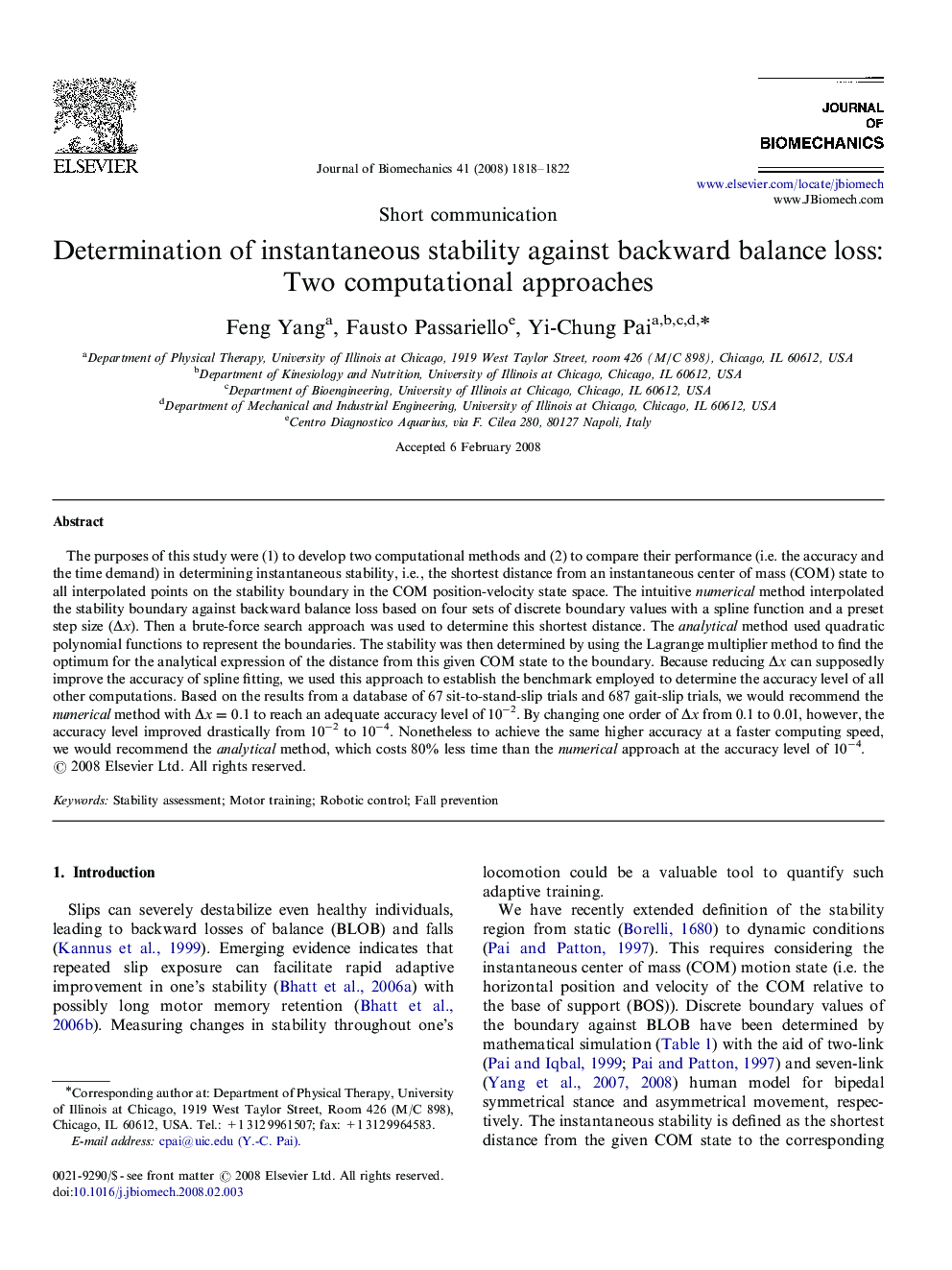| Article ID | Journal | Published Year | Pages | File Type |
|---|---|---|---|---|
| 873131 | Journal of Biomechanics | 2008 | 5 Pages |
The purposes of this study were (1) to develop two computational methods and (2) to compare their performance (i.e. the accuracy and the time demand) in determining instantaneous stability, i.e., the shortest distance from an instantaneous center of mass (COM) state to all interpolated points on the stability boundary in the COM position-velocity state space. The intuitive numerical method interpolated the stability boundary against backward balance loss based on four sets of discrete boundary values with a spline function and a preset step size (Δx). Then a brute-force search approach was used to determine this shortest distance. The analytical method used quadratic polynomial functions to represent the boundaries. The stability was then determined by using the Lagrange multiplier method to find the optimum for the analytical expression of the distance from this given COM state to the boundary. Because reducing Δx can supposedly improve the accuracy of spline fitting, we used this approach to establish the benchmark employed to determine the accuracy level of all other computations. Based on the results from a database of 67 sit-to-stand-slip trials and 687 gait-slip trials, we would recommend the numerical method with Δx=0.1 to reach an adequate accuracy level of 10−2. By changing one order of Δx from 0.1 to 0.01, however, the accuracy level improved drastically from 10−2 to 10−4. Nonetheless to achieve the same higher accuracy at a faster computing speed, we would recommend the analytical method, which costs 80% less time than the numerical approach at the accuracy level of 10−4.
